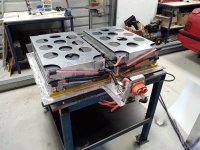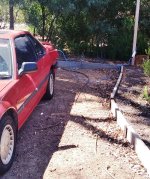jonescg
100 MW
So I am 7/8ths of the way through this battery build and the last lot of busbars are the worst.
They are severely passivated so nothing will stick to them. I found another soldering technique where you can effectively plate the aluminium with copper using FeCl3 solution and CuSO4. It looks like a more reliable connection, and given the whole lot is potted I'm confident it will work better than the engine oil trick.
https://hackaday.com/2020/06/11/solder-to-aluminum/
They are severely passivated so nothing will stick to them. I found another soldering technique where you can effectively plate the aluminium with copper using FeCl3 solution and CuSO4. It looks like a more reliable connection, and given the whole lot is potted I'm confident it will work better than the engine oil trick.
https://hackaday.com/2020/06/11/solder-to-aluminum/




